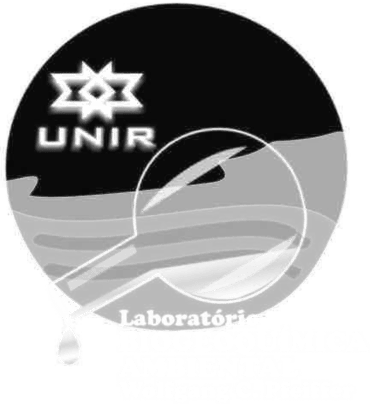Publicações 2020
Stable isotopes, Green turtles, Western Amazon, Impact of a hydroelectric, Mercury in sediment, fish, and crocodiles
ARTIGOS & PERIÓDICOS
Influence of size on total mercury (THg), methyl mercury (MeHg), and stable isotopes of N and C in green turtles (Chelonia mydas) from NE Brazil
César Augusto Barrios Rodriguez · Luiz Drude de Lacerda · Moises Fernandes Bezerra · Victor Lacerda Moura · Carlos Eduardo de Rezende · Wanderley Rodrigues Bastos
Abstract: The green turtle (Chelonia mydas) is known to present an herbivorous diet as an adult; however, juveniles may have an omnivore habit, and these changes in food preference may affect the uptake and accumulation of pollutants, such as mercury (Hg). In order to better understand the influence of this ontogenetic shift on Hg accumulation, this study evaluates the concentrations of total mercury (THg), methyl mercury (MeHg), and stable isotopes of carbon and nitrogen (δ¹³C and δ¹⁵N) in a group of juveniles of the green turtle. Tissue samples (liver, kidney, muscle, and scutes) were sampled from 47 turtles stranded dead on the coast of Bahia, NE, Brazil, between 2009 and 2013. The turtles analyzed showed a size range of 24.9–62.0 cm and an average of 36.4 ± 7.2 cm of curved carapace length. The scutes showed to be a viable method for Hg monitoring in the green turtles. The concentrations of THg and MeHg decreased with increasing size. The isotope values of δ¹⁵N and δ¹³C did not show a clear relationship with the size, suggesting that the green turtles used in our work would be occupying similar trophic levels, and foraging habitat.
Dynamics of Hg and MeHg in the Madeira River basin (Western Amazon) before and after impoundment of a run-of-river hydroelectric dam
W. Bastos, J. Dórea, L. D. Lacerda, R. Almeida, W. A. Costa-Junior, Célia C. Baía, Izidro F Sousa-Filho, E. A. Sousa, Iuri Aparecida S Oliveira, C. S. Cabral, Â. G. Manzatto, D. Carvalho, K. A. Ribeiro, O. Malm


Graphical Abstract
Abstract: The impact of a hydroelectric run-of-river (RoR) dam construction on the dynamics of total mercury (THg) and methylmercury (MeHg) is of interest to the environment and health of human and wild life. We monitored (May 2010 to October 2018) THg and MeHg in the waters and in the suspended particulate matter (SPM) of the Madeira River and its tributaries (before and after dam construction) to evaluate changes upstream and downstream from the Santo Antonio Hydroelectric Dam (SAHD). We collected 2826 samples of water and SPM at sampling stations upstream (UPMD-01, UPMD-02 and UPMD-03) and downstream the Madeira River (DWMD-04, DWMD-05 and DWMD-06), and Tributaries upstream (Branco River, Jaci-Parana River, Jatuarana-I Igarapé, Contra River, Caripunas Igarapé, Ceara Igarapé, and Teotonio Igarapé) and downstream (Jatuarana-II Igarapé and Belmont Igarapé) from the SAHD and monitored water and the total load of SPM. SPM was significantly higher in the Madeira River (median: 178.63 mg.L⁻¹) than in upstream and downstream tributaries (median: 15.30 mg.L⁻¹); however, the THg and MeHg concentrations were significantly higher in the tributaries (median: 161.14 ng g⁻¹ and 9.03 ng g⁻¹, respectively) than in the mainstream Madeira River (median = 57.06 ng g⁻¹ and 1.63 ng g⁻¹, respectively). THg concentration in the water was significantly higher in the mainstream Madeira River (median = 6.51 ng.L⁻¹) than in the tributaries (median = 2.57 ng.L⁻¹). However, the percentage of methylation in the tributaries (median = 4.9%) was 4-times higher than in the Madeira River (median: 1.3%). The significantly higher MeHg percentages in the tributaries may indicate natural (hydro-bio-geochemical factors) still predominant in this changing landscape of the Western Amazon. So far, the data suggest that this RoR has not yet impacted the THg and MeHg concentrations.
Dynamics of (total and methyl) mercury in sediment, fish, and crocodiles in an Amazonian Lake and risk assessment of fish consumption to the local population
Diego Ferreira Gomes · Raquel Aparecida Moreira · Nathalie Aparecida Oliveira Sanches · Cristiano Andrey do Vale · Michiel Adriaan Daam · Guilherme Rossi Gorni · Wanderley Rodrigues Bastos
Abstract: Increasing concerns have been raised about the toxicity of mercury (Hg) to humans, especially for those that consume a great amount of fish. High Hg concentrations have previously been measured in Amazonian waterbodies, both resulting from natural and anthropogenic sources. However, few studies have been conducted so far in Amazonian lakes that are fished by local populations. In addition, few of those studies included methylmercury (MeHg), the most toxic and bioaccumulative Hg form, and evaluated the influence of physico-chemical conditions and season on Hg dynamics. In the present study, total Hg (THg) and MeHg concentrations were measured in bottom sediment as well as in two fish and two crocodile species of the Amazonian Cuniã Lake. Bottom sediment MeHg concentrations were higher in the dry season than in the wet season, which is related to differences in physicochemical (pH and electrical conductivity) conditions. Diet appeared to be related with animal tissue MeHg concentrations, with the herbivorous fish having lower MeHg levels than the predatory fish and crocodiles. Based on the measured tissue concentrations and published data on local person weight and fish consump- tion, MeHg risk to Cuniã Lake populations was estimated. Although the MeHg fish tissue concentrations did not exceed national and international standards, a significant risk to the local population is anticipated due to their high fish consumption rates.





